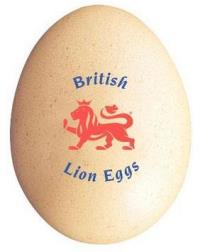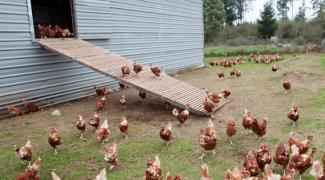 In January, negotiations were initiated between Ambassador Robert Lighthizer and his U.K. counterpart, Minister Elizabeth Truss. Intensive discussions to develop a bilateral trade agreement are in progress with dedicated task groups considering aspects of a comprehensive pact.
In January, negotiations were initiated between Ambassador Robert Lighthizer and his U.K. counterpart, Minister Elizabeth Truss. Intensive discussions to develop a bilateral trade agreement are in progress with dedicated task groups considering aspects of a comprehensive pact.
It is evident that protection of U.K. farmers will be an important obstacle to achieving an agreement. Feeding beta-agonists and related compounds to cattle and hogs will obviously be a barrier as well the U.S. practice of immesing broilers using chlorine or other compounds, long restricted in the U.K. Eggs have emerged as a factor with a specific emphasis on housing system.
The U.K. has a commercial egg population of approximately 38 million hens. Currently 42 percent are housed in enriched colony modules installed in anticipation of the January 1, 2013 deadline for elimination of conventional cages. Collectively the U.K. industry invested $400 million in conversion to a system which now  appears obsolete from the standpoint of presumed market demand. The U.K. leads Europe in free-range production with 54 percent of table eggs derived using this system. Barn housing is currently only approximately one percent of egg production but as enriched colony systems are replaced with aviaries and technical problems and the profitability of free-range declines, more eggs will be derived from barns by 2025, the projected conversion deadline. Organic production, which requires free-range management in addition to feeding organic feeds, represents three percent of production.
appears obsolete from the standpoint of presumed market demand. The U.K. leads Europe in free-range production with 54 percent of table eggs derived using this system. Barn housing is currently only approximately one percent of egg production but as enriched colony systems are replaced with aviaries and technical problems and the profitability of free-range declines, more eggs will be derived from barns by 2025, the projected conversion deadline. Organic production, which requires free-range management in addition to feeding organic feeds, represents three percent of production.
The U.K. is 85 percent self-sufficient in eggs and egg products. The majority of imports are in the form of liquid egg from Poland and the Ukraine. For the first quarter of 2020, the U.K. industry produced 7.8 million cases of shell eggs, one percent down from the corresponding quarter of 2019. The May U.S. 91cent per dozen nest-run price paid to contract farmers and independent suppliers in the U.K. was up nine percent from the first quarter of 2020. Egg products attaining 22,000 tons, were approximately six percent lower than the corresponding quarter of 2019.
EGG-NEWS is indebted to Dean Hughson for a June 27th article in the U.K. Daily Mail expressing concern over the vulnerability of the domestic egg industry valued at $1.2 billion annually. The article is replete with errors aimed at influencing consumer opinion against U.S. eggs. The article maintains that “95 percent of America’s 280 million chickens live in battery cages.” The May 2020 USDA report on cage-free production recorded a population of 76.8 million hens housed in other than cages, representing 23.6 percent of a nominal 325 million total hens, but 34.9 percent of an estimated flock of 220 million producing for the shell-egg market.
Mark Williams, a spokesperson for the British Egg Industry Council, cites the investment by U.K. producers to satisfy welfare, food safety, and environmental considerations. Williams can be assured that U.S. farmers endure similar cost burdens and effectively there is very little commercial advantage enjoyed by U.S. producers over their U.K. counterparts.
Aimee Mahony, an advisor to the National Farmers Union, expressed concern that a trade deal that allowed the importation of eggs produced according to standards below those prevailing at the U.K. would adversely impact domestic farmers. She stated that “It is crucial that the Government does not agree to any trade deal that could see imports of food that will be illegal for our farmers to produce here.”
 The problem faced by U.K. egg producers is that at the farmer-to-supplier level, margins vary from a negative return to moderately positive, mainly influenced by feed cost and supply-demand considerations. Introduction of U.S. shell eggs into the U.K. market would seriously disrupt the tenuous equilibrium experienced by their industry.
The problem faced by U.K. egg producers is that at the farmer-to-supplier level, margins vary from a negative return to moderately positive, mainly influenced by feed cost and supply-demand considerations. Introduction of U.S. shell eggs into the U.K. market would seriously disrupt the tenuous equilibrium experienced by their industry.
Ambassador Lighthizer recognizes the political power of the U.S. agricultural industry and has clearly stated that unacceptable restrictions on U.S. commodities would be a major obstacle to a free-trade agreement. It is evident that there will have to be compromises on both sides. Larger issues including the purchase of technology and equipment from Huawei, feed additives for beef and hogs and chlorine immersion for broilers, appear to be significant items to be negotiated.
For the first four months of 2020 U.S. shell egg exports attained 38.7 million dozen, approximately 1.5 percent of production. The two current importers, Hong Kong and Mexico combined, represented 70 percent of volume and 57 percent of the total value of $43.2 million. Prospects for export of shell eggs to the U.K. are minimal at best. In all probability there will be negligible trade based on the relative pricing in the U.S. and the U.K., coupled with the cost of freight. If comparable housing standards are imposed, export of cage-free eggs from the U.S. would be a nonstarter. In the event of some catastrophe, such as extensive HPAI or a recurrence of the fipronil episode in the U.K. or the E.U., the U.S. would be able to ship egg liquid to supplement domestic production. Again, it is recognized that E.U. nations and the Ukraine would have a cost advantage over the U.S. with regard to ocean freight.
Following the decline in transitory COVID-19 demand in the U.K., paralleling the U.S. situation, producers have now reverted to a state of mild oversupply, depressing nest-run and farm-gate prices. In the scheme of things, eggs will probably not be a major consideration in the bilateral trade negotiations in progress as there are more important issues. The Save Our Family Farms Association has little to fear from U.S. egg producers despite the dire predictions expressed in the Daily Mail article.